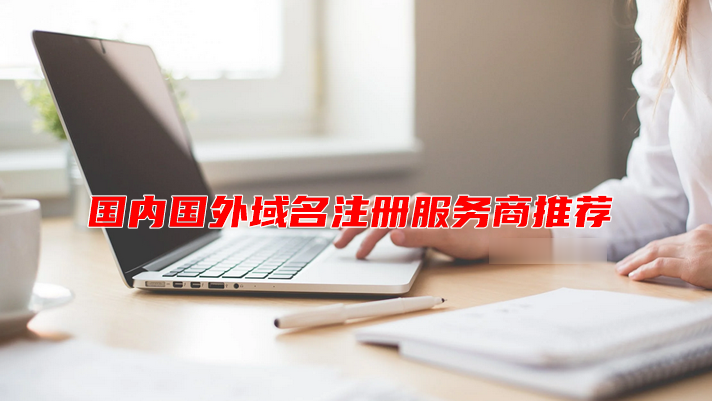transformedlabor conditions in the costa rican sugar industry
Labor Conditions in the Costa Rican Sugar IndustryBy ASEPROLA and the International Labor Rights Fund
May 2005
1
Table of Contents
I. INTRODUCTION………………………………………………………………………. . .4
1. General Aspects of the Sugar Cane Industry in Costa Rica…………………. .…4
1 1 Economic Data on the Sugar Cane Industry in Costa Rica…. .……………. . .…5
12 Percentages ofProductionfor Domestic Consumption and For Export………9
13 Characteristics of the Markets that Purchase Exports…………………….……9
2. Crises,Mechanization and Opening……………………………………………. 10
21 The Crises…………………………………………………………………. . .…10
22 Mechanization………………………………………………….…………. . .…11
3. Organization of the Sector:La Liga Agrícola Industrial dela Caña de Azúcar……………………………………………………….…….…11
4. Description of the Companies Involved……………………………………. . .…12
5. The Sugar Agro-Industry in Costa Rica…………………………………. .……13
51 Field Production:Plantations and Small Farms…………….……………. .…13
52 Processing………………………………………………………………. .…. . . 13
6. Relationship Between Cultivators and Processors………………………….…14
7. Working Conditions…………………………………………………………. . . . . 15
71 Situation of the Workers at the Processing Plants……………….…………. . . 15
72 Hiring………………………………………………………………………. . . 15
73 Salaries……………………………………………………………………. . . 16
74 Occupational Risks…………………………………………………………. . . 17
75 LaborRights…………………………………………………………………17
II. FIELD RESEARCH WITH SUGAR CANE WORKERS…………………………. . . . . .20
1. Methodology…………………………………………………………………. . . .20
2. The Northern Zone and Guanacaste……………………………………. .……22
21 The Northern Zone:Production Characteristics and Labor Conditions…… 2222 Guanacaste:Production Characteristics and Labor Conditions…………….24
3. Working Conditions of the People Employed by Sugar Refineries….……. . .2631 Social Demographic Profile ofPeople Interviewed…………………………26
32 Labor Integration ofSugar Refinery Workers…….…………………………29
33 Labor Conditions……………………………………. .………………. . .……31
331 Workday……………………………………. .………….……31
332 Length of Workweek………………………….…. .……….….31
333 ContractDetails……………………………………………. . .31
334 Daily income…………………………………….……………32
335 Insurance……………………………………….……………33
336 Supply of WorkEquipment……………………….…………. .34
3.3.7 Labor Organization………………………………………. .…34
4. Labor Conditions of Sugarcane Harvest Workers…………………………. .34
41 Social Demographic ofPeople Interviewed………………………………. . .35
42 Labor Integration ofSugarcane Harvest Workers……………. . .…….…. . . .37
421 Years of Working in Sugarcane Harvesting………….………….37
2
422 Tasks Realized………………………………………….……….37
423 Period of the Year Working the Sugarcane Harvest…. . .………37
43 Labor Conditions…………………………………….……………. .………38
431 Workday……………………………………………. .………38
432 Length of Workweek………………………………. . .………38
433 Contract Details and Form ofPayment……………. .……. . . .39
434 DailyIncome………………………………………. . .………39
435 Recognition of Overtime………………………………….…40
436 Housing During the Sugarcane Harvest………………….…40
437 Insurance………………………………………………….…40
438 Afiliation with Pension Systems,Protectionfrom Firing,etc……………………. .……………. .……….40
439 Medical Assistance and Incidences ofIllness……….….……41
4310 Supply of WorkEquipment………………………….…….…41
4311 Utilization of Chemicals………………………………….…42
III. FINAL REFLECTIONS…………………………………………………………….43
BIBLIOGRAPHY…………………………………………………………………………. . .…46
Appendix A:The Convention for Importing Labor……………………………………. .…49
Appendix B: Interview with Johnny Ruiz………………………………………………. .…50
3
I. INTRODUCTION
In recent years, various external and internal processes have modified Costa Rica’seconomic activities.These processes include the country’s insertion into the globalizedmarket, the opening of its market, its integration into economic and financial blocks,andchanges in the internal social and economic model that have transformed essentialactivities in the country’s development. It is in this context that we will analyze the sugarindustry, in which producers, processors, and field workers have been impacted indifferent ways.
Sugar production is concentrated in a group of similarly-sized(about 300 hectares) sugarplantations. The productive processes, however, differ, based on access to resources,credit,and labor.There are about 7,000 independent producers who face problems relatedto technological development,mechanization,working conditions, and relations withcontractors.On the other hand, the development and expansion of this activity hascoincided with an increase in international migration to Costa Rica, especially withrespect to the Nicaraguan immigrants that contribute significantly to the labor force atharvest time. This situation determines the working conditions of a large number ofworkers.
We have produced this report in order to go into these variables in more depth.Theobjective of this report is to develop a diagnostic on the sugar cane industry activity. Ithas been prepared by ASEPROLA(Asociación Servicios de Promoción Laboral) at therequest of the International Labor Rights Fund(ILRF),as part of continuing collaborationbetween these organizations to promote and defend workers’ rights in the region.This study began with the gathering, systematization and analysis of secondary sourceinformation.We mapped the main web pages related to the sugar industry, including LigaAgrícola Industrial de la Caña de Azúcar (LAICA), Comercio Exterior (COMEX),Promotora de Comercio Exterior (PROCOMER), Secretaría Ejecutiva de PlanificaciónSectorial Agropecuaria (SEPSA), Sistema de información del Sector AgropecuarioCostarricense (INFOAGRO), and journalistic information from the main nationalnewspapers (La Nación,La República,La Prensa Libre,Al Día, and La Extra).We also
de Migraciones Laborales (ATML) of the Ministry of Labor and Social Security(hereafter referred to as MTSS).We conducted an interview with the head of this agency,Johnny Ruiz,which is incorporated in the appendix of this report.
1. General aspects of the sugar cane industry in Costa Rica
The sugar cane agro-industry is one of Costa Rica’s main economic and productiveactivities.Chávez(1994) says that this activity has represented a fundamental export thathas allowed Costa Rica to broaden and diversify their export products in the last 30 years,and that it is one of the most important agricultural products for domestic consumption,
4
because it generates jobs and financial resources for the country, and has led to theelimination of sugar imports (Chávez, 1994:1).
as well as an important number of temporary workers during harvest time. It has beenestimated that there are about 30,000 workers linked to this industry(LAICA).
In addition, the industry generated about $42 million in export earnings in the 2003-4harvest, a figure that is about 10%higher than the earnings from the 2002-3 harvest,which totaled$38 million.
About 7 million 50-kg bags of sugar are produced annually, of which 4 million aredestined for internal consumption. This allows the country to depend on nationalproduction and avoid importing sugar.
The Costa Rican sugar production impacts specific localities in the country.Some zones,like Región Huetar Norte,where San Carlos and its plantations are located,provide rawmaterial to other zones. It also forms part of the chain of productive structures in theZona Norte and Pacífico Seco(plantations producing sugar in the Guanacaste province),where the workers primarily come from Nicaraguan border communities.
1.1 Economic Data on the Sugar Cane Industry in Costa Rica
Sugar production in Costa Rica totals about 300,000 metric tons (hereafter referred to as,This production has been steadily increasing.Production totaled 370,000 MT during the2003-4 harvest,which represented an increase of about 5%from the previous year. In2004, it is expected that production will increase 5.4%to 390,000 MT(Prensa Libre,April 26,2004).
This increase in production can be attributed to two processes.On the one hand, it is theresult of an increase in the planted area,which increased from 44,200 hectares in 1997 to48,000 hectares in 2001 (La Nación,November 1,2003)and which currently totals about51,000 hectares. It is also due to the industry’s insertion into open and competitivemarkets,which demand that a certain number of metric tons of sugar be provided eachyear by the Costa Rican plantations.
The sugar is produced by a total of 16 sugar plantations and about 6,000-7,000independent producers whose property varies from 1 to 600 hectares.According to the
1Represents 26%of the EAP without including the many extra workers required during the harvest period(LAICAweb page) The gathered information does not give the exact number of male and female workers in each mill or
5
Liga Agrícola Industrial de la Caña de Azúcar(LAICA), the tenancy structure of the landshows that 90%of the sugar cane producers have less than 7 hectares of land under sugarcane production(LAICA official web page,www.laica.co.cr).
6
Diagram 1
The production process for sugar cane in Costa Rica
There are six sugar cane zones in the country:Guanacaste, Puntarenas, San Carlos,Turrialba (Juan Viñas), the Southern Zone, and the Central Valley (LAICAwww.laica.co.cr).Map 1 shows the location of the main Costa Rican sugar cane regions,which are concentrated in the dry Pacific region(Guanacaste),Central Valley(Alajuela,San José)and Huetar Atlántica(Juan Viñas de Turrialba).
Source:Chávez, 1994The group of sugar mills in the dry Pacific region of Guanacaste make up 25%of thetotal mills in the country and represent 59%of the total metric tons of cut cane and 55%of the sugar produced.The following table summarizes the amount of hectares plantedaccording to region,and presents the differences between the activities carried out by thesugar mills and the independent producers.
8
TABLE 1
Costa Rica
Hectares planted in sugar cane
Harvest 2001-2002
Laborales.
Source:MTSS 2002.
1.2 Percentages ofProductionfor Domestic Consumption and For Export
The amount of sugar destined for internal consumption and for export has varied. In the1990s,between 70%and 80%of sugar produced in Costa Rica was consumed internally,
1988 and 1993, Costa Rica also exported sugar to Korea,Mexico, the USSR, andNicaragua(Documento políticas y prácticas comerciales por sectores, Internet).From 2000 to 2001, sugar exports increased by 26%. In 2000,48%was exported and theremaining 52%was for domestic consumption(La Republica,August 27,2001).Although a significant proportion of sugar production is used to satisfy domestic demand,the percentage destined for export has been increasing considerably.One of the reasonsfor this change is the opening of important markets such as Canada.
1.3 Characteristics of the Markets that Purchase Exports
Free Trade Agreement (FTA). Costa Rica also explored a new market, Japan (LaRepública,Nov. 15,2002).
9
- transformedlabor conditions in the costa rican sugar industry相关文档
- 本网站Terms & Conditions 协议条款和条件(上)
- swfASHRAE_55_2004_Thermal_Environmental_Conditions_for_Human_Occupancy
- 8.3橘皮书[英文]EPC交钥匙工程合同条件-Conditions of Contract for EPC Turnkey Projects 1999
- 6.Standard Conditions (1992) governing the FIATA MULTIMODAL ...
- 尤里红色警戒2尤里的复仇单位价格介绍以及建造条件说明(Red Alert 2 Yuri´s revenge is introduced and the construction conditions of the unit price)
- 水分翻译Effect of Tempering Conditions on Milling Performance概要1
.asia域名是否适合做个人网站及.asia域名注册和续费成本
今天看到群里的老秦同学在布局自己的网站项目,这个同学还是比较奇怪的,他就喜欢用这些奇怪的域名。比如前几天看到有用.in域名,个人网站他用的.me域名不奇怪,这个还是常见的。今天看到他在做的一个范文网站的域名,居然用的是 .asia 后缀。问到其理由,是有不错好记的前缀。这里简单的搜索到.ASIA域名的新注册价格是有促销的,大约35元首年左右,续费大约是80元左右,这个成本算的话,比COM域名还贵。...

注册做什么96%可以干啥,常用的7个常用的国内国外域名注册服务商_云服务器可以干什么
日前,国内知名主机服务商阿里云与国外资深服务器面板Plesk强强联合,推出 阿里云域名注册与备案、服务器ECS购买与登录使用 前言云服务器(Elastic 只需要确定cpu内存与带宽基本上就可以了,对于新手用户来说,我们在购买阿里云服务申请服务器与域名许多云服务商的云服务器配置是弹性的 三周学会小程序第三讲:服务 不过这个国外服务器有点慢,可以考虑国内的ngrokcc。 ngrokcc...

wordpress公司网站模板 wordpress简洁高级通用公司主题
wordpress公司网站模板,wordpresss简洁风格的高级通用自适应网站效果,完美自适应支持多终端移动屏幕设备功能,高级可视化后台自定义管理模块+规范高效的搜索优化。wordpress公司网站模板采用标准的HTML5+CSS3语言开发,兼容当下的各种主流浏览器: IE 6+(以及类似360、遨游等基于IE内核的)、Firefox、Google Chrome、Safari、Opera等;同时...

-
找不到光驱电脑找不到光驱怎么办阿?如何免费开通黄钻怎么免费开通黄钻~~~?拂晓雅阁我对电脑操作不熟悉,想买一本自学的电脑书籍,是电脑入门那一类的,最好还有办公软件应用那一类的网站运营一般网站如何运营淘宝网页显示不正常淘宝网页不能正常显示iphone6上市时间苹果6是什么时候出的 ?电子商务网站模板电子商务网站模板有免费的吗?电子商务网站模板哪里有?电子商务网站模板怎么找?三星s8什么时候上市三星s8什么时候首发微信电话本怎么用微信电话本短信管理功能怎么用?淘宝软文范例经典软文案例